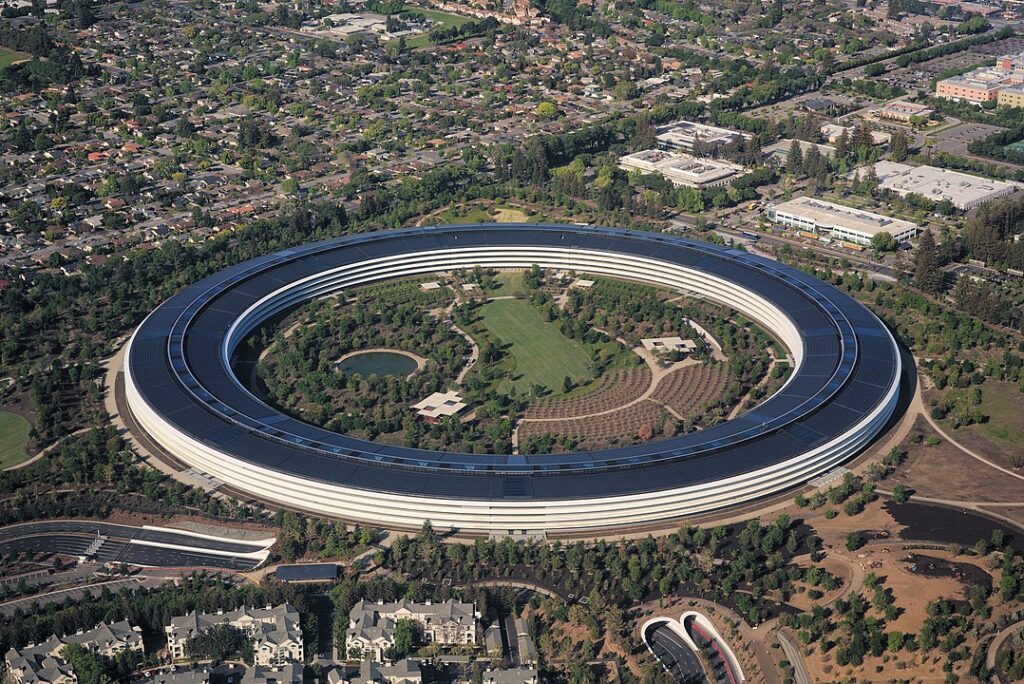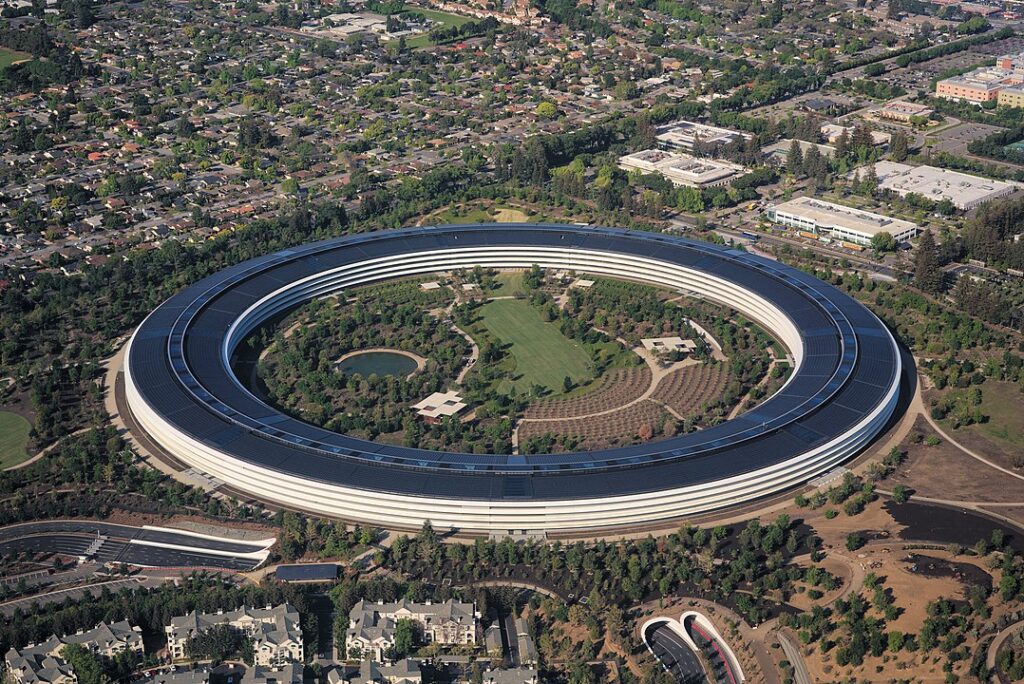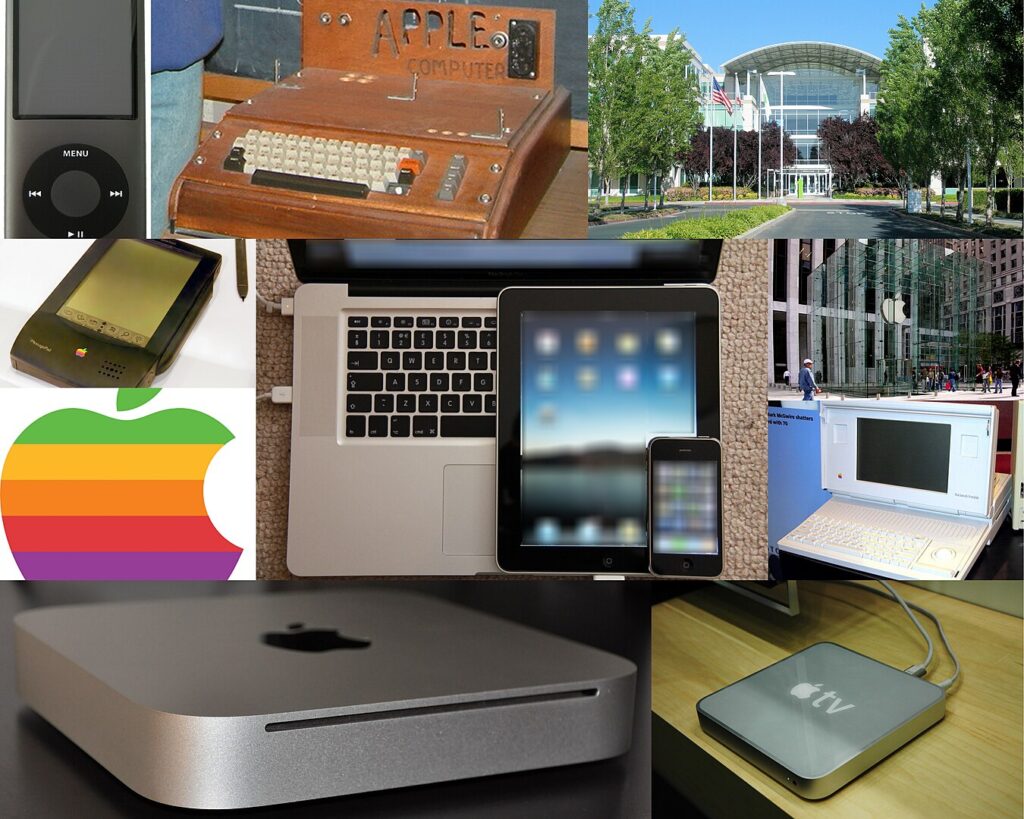
Introduction
Apple Inc. is a globally renowned technology company that has made an indelible mark on the industry. With its innovative products and unwavering commitment to design excellence, Apple has revolutionized the way we interact with technology. This article provides a comprehensive overview of Apple Inc., highlighting its rich history, key products and services, design philosophy, market performance, impact on various industries, corporate social responsibility, key people behind its success, marketing strategies, future outlook, and challenges.

History of Apple Inc.
Apple Inc. was founded on April 1, 1976, by Steve Jobs, Steve Wozniak, and Ronald Wayne in Cupertino, California. The company started in a garage, with an ambitious vision to develop and sell personal computers. In its early years, Apple released the Apple I and Apple II, which played a pivotal role in popularizing home computing.

The turning point for Apple came in 1984 with the introduction of the Macintosh. This groundbreaking computer featured a graphical user interface (GUI), revolutionizing the way users interacted with computers. Despite initial challenges and internal conflicts, Apple’s innovative spirit persevered.
The departure of Steve Jobs in 1985 led to a period of struggle for Apple. However, Jobs returned to the company in 1997, bringing a renewed vision and determination. Under his leadership, Apple experienced a remarkable resurgence, marked by the launch of iconic products such as the iMac, iPod, iPhone, iPad, and more.

Apple’s Key Products and Services
Mac computers and operating systems: Apple’s Mac lineup encompasses desktop and laptop computers, known for their sleek design, powerful performance, and intuitive macOS operating system.
iPhone and iOS ecosystem: The iPhone revolutionized the smartphone industry, combining a touchscreen interface with advanced features and an extensive ecosystem of apps and services through iOS.
iPad and its impact on the tablet market: The iPad introduced a new category of portable devices, offering a seamless user experience, versatile functionality, and a wide range of apps tailored for productivity, creativity, and entertainment.
Apple Watch and the rise of wearable technology: With its sophisticated design and health-tracking capabilities, the Apple Watch has become a leading smartwatch, empowering users to monitor their fitness, receive notifications, and access apps right from their wrists.
Apple TV and the convergence of media and technology: Apple TV allows users to stream content from various services, transforming their television into an entertainment hub.
Apple Services: iCloud, Apple Music, App Store, etc.: Apple provides a range of services, including iCloud for seamless data synchronization, Apple Music for music streaming, and the App Store for downloading apps across all Apple devices.
Design Philosophy and Innovation
Apple is renowned for its unwavering commitment to design excellence. This dedication is deeply influenced by Jonathan Ive, Apple’s former Chief Design Officer. Ive’s influence can be seen in the minimalist aesthetics, attention to detail, and user-centred approach of Apple’s products.

Apple’s design philosophy emphasizes simplicity and intuitive user experiences. The company strives to create products that seamlessly integrate hardware, software, and services, resulting in a cohesive ecosystem that enhances user productivity and enjoyment. Apple’s innovative designs have set new industry standards and inspired countless competitors.
Apple’s Ecosystem and Integration
One of Apple’s strengths lies in its ability to create a seamless ecosystem across its devices. This integration allows users to effortlessly transition between their iPhone, iPad, Mac, and other Apple products. Continuity features such as Handoff and AirDrop enable smooth multitasking and data sharing.

iCloud plays a central role in Apple’s ecosystem, enabling users to access their files, photos, and documents across multiple devices. It provides a secure and convenient way to synchronize data, ensuring a consistent experience across the Apple ecosystem.
While the closed ecosystem offers a cohesive user experience, it also comes with certain benefits and drawbacks. On one hand, the closed nature enhances security and privacy, as Apple tightly controls the software and hardware integration. On the other hand, it limits customization and restricts compatibility with non-Apple devices and software.
Apple’s Market Performance and Financials
Apple’s market capitalization consistently ranks among the highest in the world, reflecting its position as a dominant force in the technology industry. The company’s financial success is fueled by various revenue streams, including iPhone sales, services, and wearables.
The iPhone has been a major driver of Apple’s success, with its widespread adoption and loyal customer base. However, Apple faces intense competition from rival smartphone manufacturers and must continuously innovate to maintain its market dominance.
To expand its global footprint, Apple has been actively exploring emerging markets, adapting its products and pricing strategies to appeal to diverse consumer demographics. This expansion into new territories presents both opportunities and challenges for the company.
Apple’s Impact on Various Industries
Apple’s innovative products have had a profound impact on several industries, transforming the way we consume music, play games, distribute digital content, educate, and even receive healthcare.
The introduction of iTunes and the iPod revolutionized the music industry, providing a legal and convenient platform for digital music distribution. The App Store has similarly revolutionized the mobile gaming industry, empowering developers and offering a vast array of games to users worldwide.
Apple’s devices and software have also had a significant impact on publishing and digital content distribution. With iBooks and Apple News, users can access a wide range of books and news articles, disrupting traditional publishing models.
In the education sector, Apple products, such as the iPad and Mac, have found widespread adoption in schools, offering interactive learning experiences and enabling personalized instruction. In healthcare settings, Apple devices are used for data collection, patient monitoring, and improving healthcare outcomes.
Apple’s Corporate Social Responsibility
Apple places a strong emphasis on corporate social responsibility, addressing environmental sustainability, supplier responsibility, diversity and inclusion, and philanthropic initiatives.
The company has implemented various environmental initiatives, including transitioning to renewable energy sources, reducing carbon footprint, and increasing recycling efforts. Apple also holds its suppliers accountable for responsible practices, ensuring fair labor conditions and promoting ethical supply chains.
Apple actively promotes diversity and inclusion within its workforce, aiming to create an inclusive culture that fosters innovation and equality. Additionally, Apple engages in philanthropic activities, supporting various charitable causes and contributing to communities worldwide.
Key People Behind Apple’s Success
The vision and leadership of key individuals have played a pivotal role in Apple’s success. Steve Jobs, Apple’s co-founder, had a profound impact on the company’s culture, emphasizing innovation, simplicity, and perfection. Tim Cook, Jobs’ successor, successfully navigated the transition and continued to drive Apple’s growth.
Behind the scenes, designers, engineers, and key executives have contributed their expertise to develop groundbreaking products and shape Apple’s future. The collective efforts of the talented workforce and Apple’s distinctive company culture have been instrumental in driving the company’s success.
Apple’s Marketing and Branding Strategies
Apple’s marketing campaigns have become legendary, capturing the essence of its products and appealing to consumers’ emotions. These campaigns often focus on highlighting the user experience, showcasing innovative features, and evoking a sense of aspiration and desire.
Apple’s brand image is synonymous with innovation, elegance, and simplicity. The company strategically positions itself as a premium brand, commanding a loyal customer base and creating a perception of quality and exclusivity. Apple’s retail stores are designed to enhance the customer experience, providing a unique environment for consumers to explore and interact with Apple products.
Future Outlook and Challenges
Looking ahead, Apple is placing increased emphasis on services and subscription-based models, aiming to diversify its revenue streams beyond hardware sales. This strategic shift allows Apple to capitalize on recurring revenue and strengthen customer loyalty.
Apple is also exploring opportunities in new markets and product categories, such as augmented reality, autonomous vehicles, and health-related technologies. However, the company faces challenges from competitors and changing consumer trends, requiring ongoing innovation and adaptation.
Emerging technologies, such as artificial intelligence, blockchain, and 5G, have the potential to reshape the industry. Apple must stay at the forefront of these developments to maintain its relevance and continue shaping the technology landscape.
Conclusion
Apple Inc. has had a transformative impact on the technology industry. From its humble beginnings to its current position as a global powerhouse, Apple’s commitment to design excellence, innovation, and integration across its ecosystem has set new standards for the industry.
As Apple continues to push boundaries and shape the future, its influence extends beyond its products. The company’s corporate social responsibility initiatives, key people behind its success, marketing strategies, and commitment to customer experience all contribute to its enduring legacy.
With its unwavering dedication to providing exceptional user experiences and its constant drive for innovation, Apple Inc. remains an iconic and influential force in the technology landscape, leaving an indelible mark on the world.







[…] Apple […]